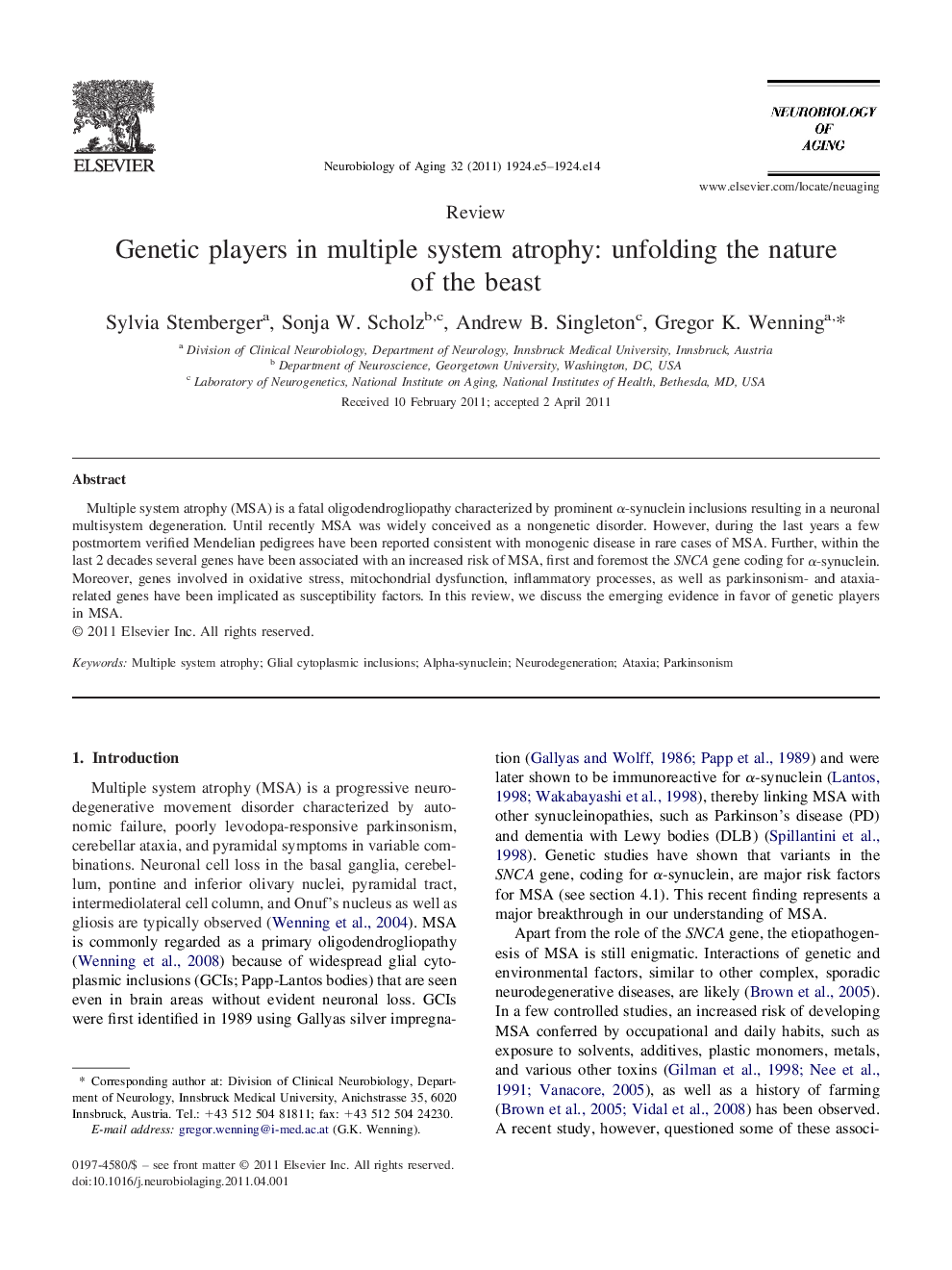| Article ID | Journal | Published Year | Pages | File Type |
|---|---|---|---|---|
| 6810332 | Neurobiology of Aging | 2011 | 10 Pages |
Abstract
Multiple system atrophy (MSA) is a fatal oligodendrogliopathy characterized by prominent α-synuclein inclusions resulting in a neuronal multisystem degeneration. Until recently MSA was widely conceived as a nongenetic disorder. However, during the last years a few postmortem verified Mendelian pedigrees have been reported consistent with monogenic disease in rare cases of MSA. Further, within the last 2 decades several genes have been associated with an increased risk of MSA, first and foremost the SNCA gene coding for α-synuclein. Moreover, genes involved in oxidative stress, mitochondrial dysfunction, inflammatory processes, as well as parkinsonism- and ataxia-related genes have been implicated as susceptibility factors. In this review, we discuss the emerging evidence in favor of genetic players in MSA.
Keywords
Related Topics
Life Sciences
Biochemistry, Genetics and Molecular Biology
Ageing
Authors
Sylvia Stemberger, Sonja W. Scholz, Andrew B. Singleton, Gregor K. Wenning,
